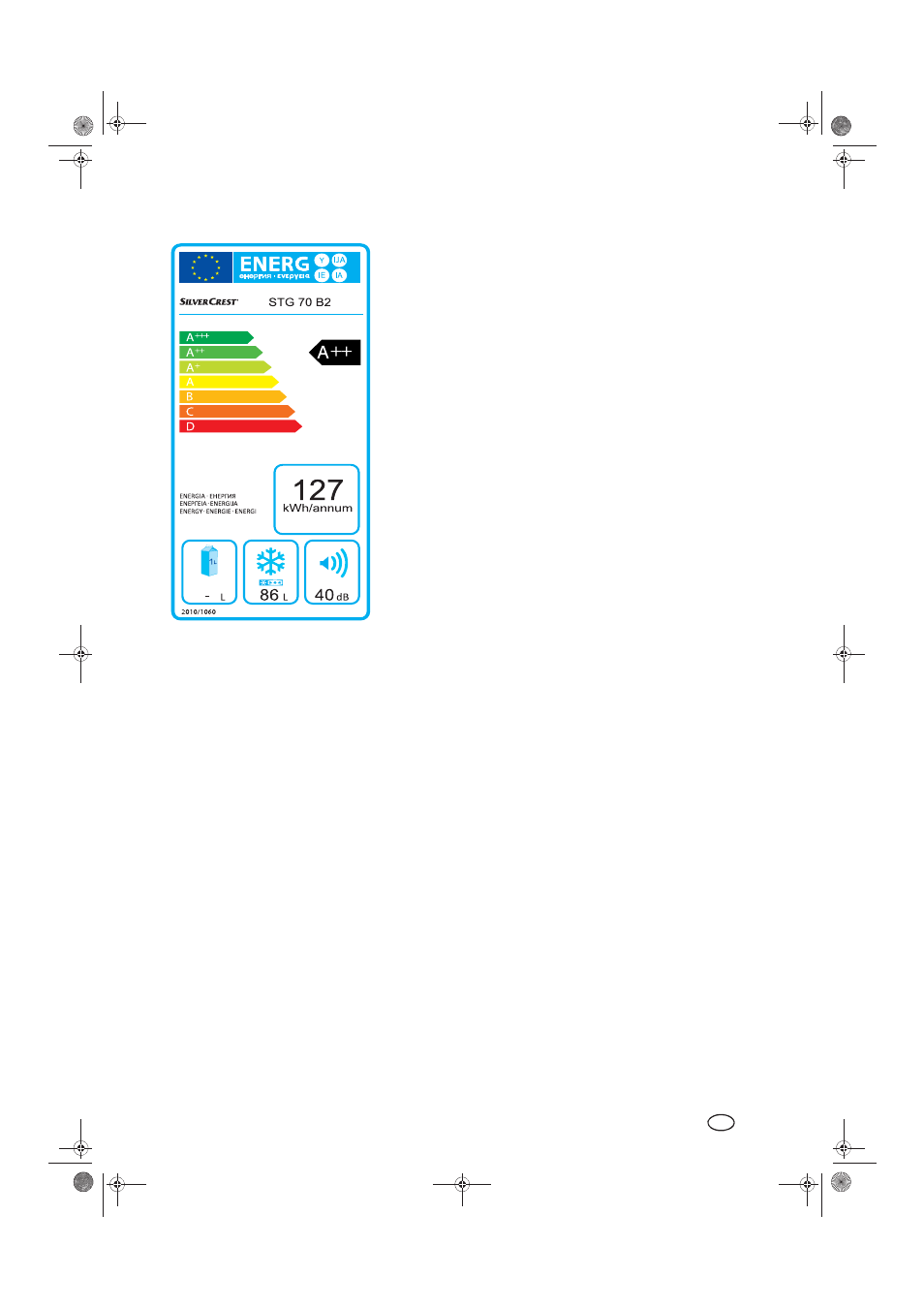Saving energy, Useful information about deep- freezing – Silvercrest STG 70 B2 User Manual
Page 7

5
GB
6.
Saving energy
This appliance complies with energy efficiency class A++. In
order to achieve the lowest possible energy consumption,
please note the following instructions:
•
Position the appliance in a location with the lowest possi-
ble ambient temperature, but not colder than +16 °C.
•
Do not position the appliance in the proximity of heat
sources such as an oven, a radiator or another cooling
device.
•
Avoid direct sunlight.
•
Always ensure that there is sufficient ventilation around
the appliance. Observe the minimum clearances speci-
fied in these instructions.
•
Use a freezing thermometer to check the temperature in
the interior. If the temperature falls below
-18 °C, set a lower temperature level with the tempera-
ture controller 1.
•
Use the SUPER setting only when using the appliance
for the first time and in the period from 24 hours before to
24 hours after storing relatively large quantities of fresh
food.
•
Defrost the freezer regularly. A layer of ice increases the
energy consumption.
•
Pack food so that it is air- and water-tight. This prevents
additional ice formation.
•
Ensure that the food stored in the freezer is well-labelled
and clearly sorted. This saves time when opening the
door to remove the food.
•
Open the door as infrequently and as briefly as possible.
•
Allow warm food to cool down to room temperature be-
fore freezing it.
•
A door seal that is not air-tight increases the energy con-
sumption. Check from time to time whether the door seal
is correctly in contact all the way round.
7.
Useful information about deep-
freezing
•
After defrosting, deep-frozen food must be consumed as
quickly as possible and must not be re-frozen under any
circumstances. There is only one exception: if you defrost
raw ingredients and then cook them fully, the cooked food
may then be frozen again.
Storage of deep-frozen products
•
To store food that has already been frozen, you may use
either the storage compartment 3 or the freezing com-
partments 2.
•
Do not purchase deep-frozen products that have a cover-
ing of ice. This indicates that they have already been de-
frosted partially.
•
Make sure that deep-frozen products do not begin to de-
frost on the journey between the store and your house.
Pack the food in an insulating bag, for instance, and keep
the time until the cheap-frozen products are placed in
your freezer as short as possible.
•
Observe the manufacturer's instructions with regard to
storage time and defrosting conditions.
Freezing fresh food
•
To freeze fresh food, place the items in the freezing com-
partments 2. When they are completely frozen, you can
store them in any compartment.
•
Please make sure that the food items to be frozen to not
touch each other or any other frozen food items.
•
The maximum quantity of fresh food that you can freeze
in this appliance within 24 hours is 4 kg.
•
Please check the quality and freshness of food that you
want to freeze.
•
Some foods are not suitable for freezing, e.g. grapes, cit-
rus fruits, green salads, onions, garlic, raw potatoes, rad-
ishes, tomatoes, raw eggs in their shells.
•
Some types of fruit and vegetable (e.g. apples, pears,
peaches) should be blanched briefly in boiling water be-
fore freezing.
•
Add seasoning only sparingly to food before freezing, as
some spices strengthen or change their flavour during
freezing.
•
Pack the food carefully into suitable, air-tight plastic bags
or plastic containers that are impermeable to air and
moisture.
Avoid air in the packaging.
In this way, the vitamins and the quality of the food are
preserved most effectively.
•
Ensure a high level of hygiene when preparing the frozen
goods.
•
Before freezing, divide the food items into suitable por-
tions for your later use. This makes it easier to use the
food at a later stage.
•
Relatively small portions make quick freezing easier,
which is important for quality.
•
Label each portion with the date, quantity and type of the
food.
•
Allow warm food to cool down to room temperature be-
fore freezing it.
•
Make sure that the fresh food does not touch already fro-
zen items, so that they do not begin to defrost slightly.
•
Defrost frozen food slowly. It is best to defrost meat and
fish in the refrigerator, and all other foods at room tem-
perature.
__RP62026_B6.book Seite 5 Sonntag, 6. Februar 2011 9:01 21
